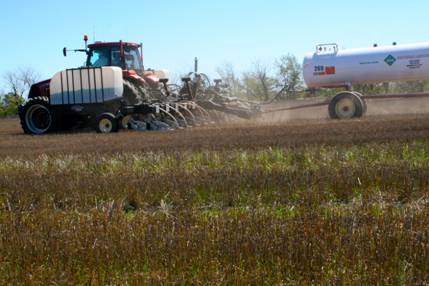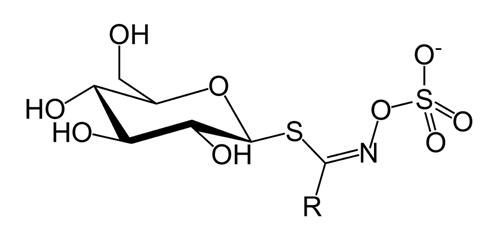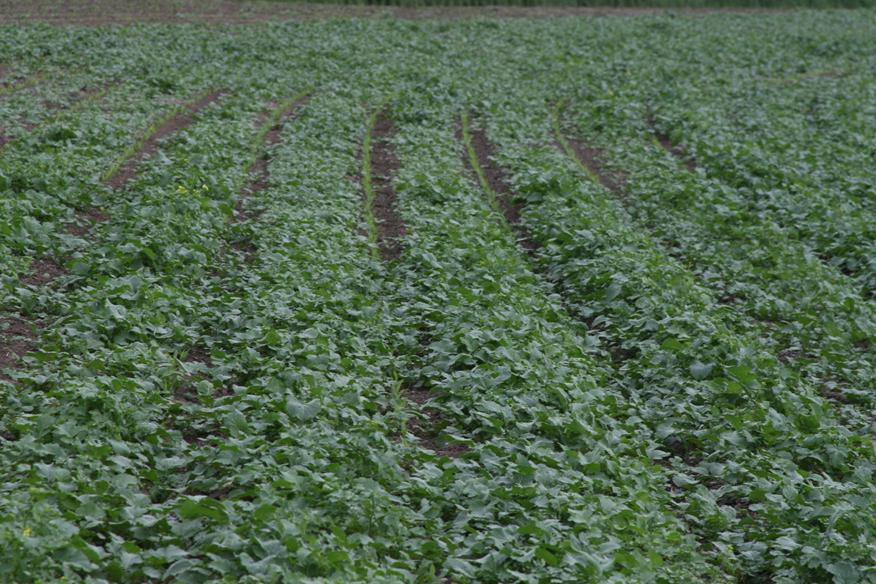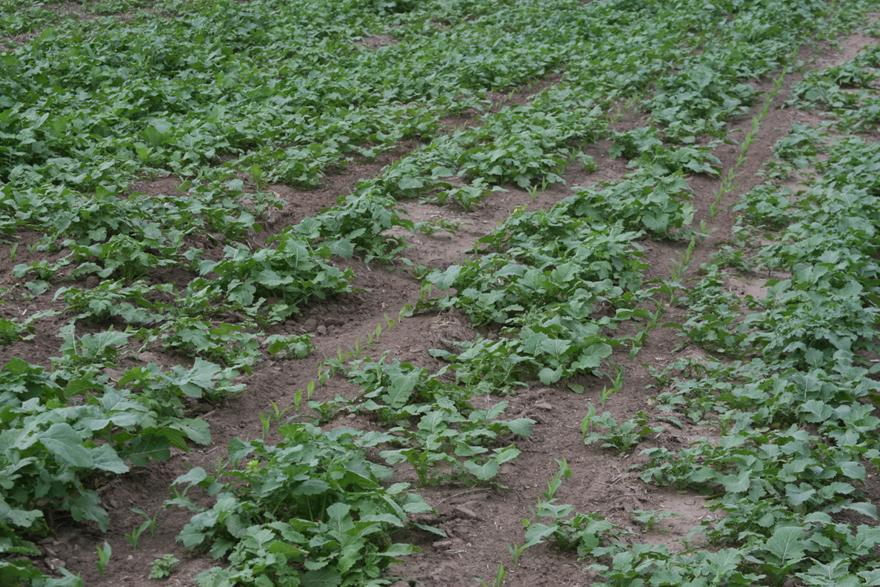|
Return To Recent Broadcasts Return to Main Corn
Gets Biological Yield Enhancement Pacific Gold Mustard is fumigant grade. The University of Idaho, PPV mustard plant, is high in Glucosinolate content forming ally isothiocyante in the soil. The plant is dual purpose. Pacific Gold is bred as an oriental mustard for export and used in cooking oils with a pungent taste. Pacific Gold is also bred as a fumigant grade mustard and used for cleaning up problematic soils. Soil fumigation can be effective with certain types of mustards. The target must be identified. In this case, the target is nematodes. The strip till pass was made 2 weeks earlier with no nutrients applied, since soybean will be produced. This is an
Arkansas River floodplain as a sandy soil type with nematode infestation.
The problem has been identified as root lesion nematode and
Mark Ricker, Exactrix® owner planted soybeans into the Pacific Gold Mustard, May 11, 15. Mark Ricker carried out testing at Lyons in 2014, with good results in full pivot size plots. In fact, testing showed giant increases in corn production. The test plots were not official or by STEEP standards. Bigger plants observed….Making an applied nitrogen test. The larger mustard plants on the right side of the picture were fertilized at an angle with a P-51 Mustang Tool bar. The mustard leaves were about 2.5 times larger with only NH3 applied. There was no ATS applied in the test.
Mark Ricker’s P-51, Exactrix® Mustang Tool Bar was utilized to no-tillage band TAPPS and TAPPKTS. The Exactrix fertilized Pacific Gold fumigant grade mustard plants were taller plants and much healthier with 55 lbs./A of NH3 applied. There was likely a double in the bio-mass so fertilizer application to fumigant mustard will work economically. The conclusion for next year is about 30 pounds N/A and about 30 lbs.S/A, Ammonium Thio-Sulfate, Thio-Sul®, to be applied when Pacific Gold fumigant grade mustard is included in the rotation with Soybeans. Sulfur application is important to improve Glucosinolate production along with nitrogen to make amino acids. TAPPS and TAPPKS application can also be considered. The fumigant crop can also be irrigated to improve the stands. Seed cost is about $1.00 per lb. The crop is normally seeded at 5 lbs. per acre. The water cost can be as high as $10.00 per acre. The nutrient cost should be around $20 to $30 per acre using NH3 and Thio-sul®. Costs of $5.00 to as high $55.00 per acre are considered acceptable, since the results from last year showed an additional $400 to $500 per acre of income. Gigantic yield increases were observed due to suppression of nematodes using Pacific Gold Mustard.
The Glucosinolate molecule breaks down with water to form ally isothiocyanate. The result is a natural, rotational control or suppression of nematodes with no significant damage to earthworm populations. The 30 inch strips will be planted to soybeans by May 12, 15. The Pacific Gold mustard and RR soybeans will be applied with Roundup® in about 2 weeks after the Pacific Gold mustard is fully bolted. Soybeans are more light sensitive than corn from the competitive effect. In 2014 the Pacific Gold fumigant mustard produced a very significant yield boost in corn production. The full pivot test produced a very big jump in yield as compared to previous corn crops. The pivot tested has consistently lost yield from 1996 in a corn soybean rotation. The previous corn crop had yielded only 117 bushels per acre due to nematodes. Crop Quest consultant, Jon French has been doing the testing for nematodes. Using March seeded Pacific Gold Fumigant Mustard, the nematode population can be reduced for the following corn crop in 2016. In fact, the nematode problem is so significant that every opportunity must be made to fumigate. The Pacific Gold mustard planted about March 3, 2015 at 10 lbs. The field was strip tilled in late April in preparation for corn or soybean, in this case soybean. Some strip tilled fields are also prepared for corn and Exactrix TAPPS and TAPPKTS nutrients are placed directly below the seed rows. May 6, 15 at Lyons, KS, Exactrix TAPPS and TAPPKTS, strip till corn in Pacific Gold mustard fumigated soils.
ChemistryGlucosinolates constitute a natural class of organic compounds that contain sulfur and nitrogen and are derived from glucose and an amino acid. They are water-soluble anions and can be leached into the water during cooking.[1] Glucosinolates belong to the glucosides. Every glucosinolate contains a central carbon atom, which is bound via a sulfur atom to the thioglucose group (making a sulfated aldoxime) and via a nitrogen atom to a sulfate group. In addition, the central carbon is bound to a side group; different glucosinolates have different side groups, and it is variation in the side group that is responsible for the variation in the biological activities of these plant compounds. Some glucosinolates:
EXACTRIX LINKS
|







